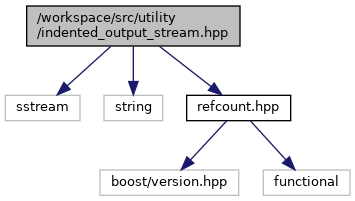 |
PandA-2024.02
|
 |
PandA-2024.02
|
Class to print indented code. More...


Go to the source code of this file.
Data Structures | |
| class | IndentedOutputStream |
| Class to print indented code. More... | |
Macros | |
| #define | STD_OPENING_CHAR (static_cast<char>(1)) |
| STD include. More... | |
| #define | STD_CLOSING_CHAR (static_cast<char>(2)) |
| Special closing character used to close the current nested level. More... | |
Typedefs | |
| using | IndentedOutputStreamRef = refcount< IndentedOutputStream > |
Class to print indented code.
Last modified by
Last modified by
Definition in file indented_output_stream.hpp.
| #define STD_CLOSING_CHAR (static_cast<char>(2)) |
Special closing character used to close the current nested level.
This character is just a control character and therefore it will not be printed.
Definition at line 58 of file indented_output_stream.hpp.
Referenced by IndentedOutputStream::Append(), TestbenchGeneration::Exec(), simple_indent::operator()(), xml_element::print(), xml_document::write_to_file_formatted(), and verilog_writer::write_transition_output_functions().
| #define STD_OPENING_CHAR (static_cast<char>(1)) |
STD include.
utility include Special opening character used to open a new nested level. This character is just a control character and therefore it will not be printed.
Definition at line 55 of file indented_output_stream.hpp.
Referenced by IndentedOutputStream::Append(), TestbenchGeneration::Exec(), simple_indent::operator()(), xml_element::print(), xml_document::write_to_file_formatted(), and verilog_writer::write_transition_output_functions().
Definition at line 140 of file indented_output_stream.hpp.
 1.8.13
1.8.13